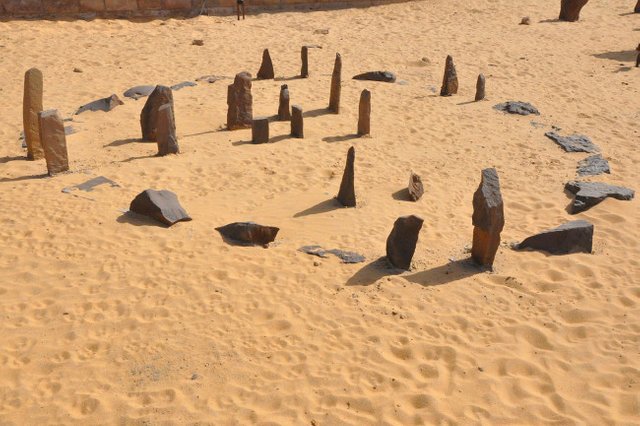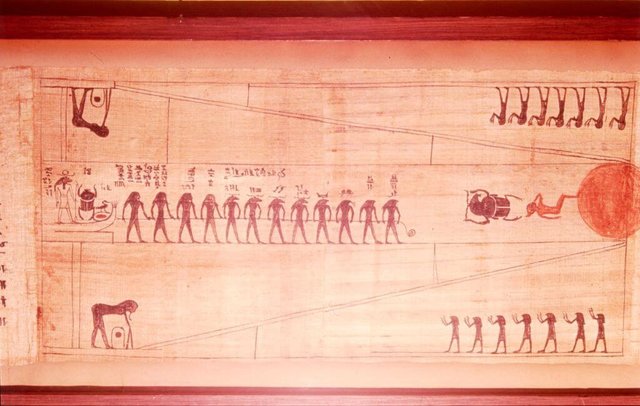The world's first astronomical site was built in Africa and is older than Stonehenge

This 7,000-year-old stone circle, Nabta Playa, is the oldest known astronomical site on Earth.
These megaliths, great prehistoric monuments made of stone, may seem mysterious in our modern era, but many ancient societies used them to understand the movement of the stars as if it were a great celestial clock. The first astronomical observatory.
The first celestial clock
Europe alone has some 35,000 megaliths, including many astronomically aligned stone circles, as well as tombs (or cromlechs) and other standing stones. These structures were mainly built between 6,500 and 4,500 years ago, mainly along the Atlantic and Mediterranean coasts.

The most famous of these sites is Stonehenge, a monument in England believed to be around 5,000 years old.
But even these primitive sites are at least centuries younger than the oldest known stone circle in the world: Nabta Playa.
Located in Africa, Nabta Playa is about a thousand kilometers south of the Great Pyramid of Giza in Egypt. It was built more than 7,000 years ago, making Nabta Playa the oldest stone circle in the world, and possibly the oldest astronomical observatory on Earth.
It was built by a cattle cult of nomadic people to commemorate the summer solstice and the arrival of the monsoons.
The discovery of Nabta Playa
In the 1960s, Egypt was planning a major dam project along the Nile River that was to flood important ancient archaeological sites. The United Nations Educational, Scientific, and Cultural Organization (UNESCO) intervened with funds to help relocate famous structures, as well as to find new sites in the area before they were lost forever.
But a leading American archaeologist named Fred Wendorf saw another opportunity. He wanted to search for the ancient origins of Pharaonic Egypt, away from the River Nile.
Luckily, in 1973, a Bedouin guide, or nomadic Arab, named Eide Mariff, came across a group of what appeared to be large stone megaliths as they crossed the Sahara.
Mariff took Wendorf, with whom he had worked since the 1960s, to the site, which is about 100 km from the Nile. Romuald Schild, Wendorf's old friend, and collaborator remember the story of the discovery in a different way. He says the whole team was crossing the desert in 1973 when they stopped for a swim. Evidence of megalithic remains lay on the surface.
After seven years without being able to unravel their mystery, Wendorf called in Malville, an archaeoastronomy expert from the southwestern United States. Malville acknowledged that he too was puzzled when he first looked at maps of the ancient site. He knew he had to travel there in person to get a sense of the place, as well as its creators and its heavenly significance.
The team had already performed radiocarbon dating at the site by taking samples of fireplaces and tamarisk roofing material found inside the stone circle.
They also discovered that the stone circle once aligned with Arcturus, Sirius and Alpha Centauri. There were also stones that seemed to correspond to the constellation of Orion. By tracking Arcturus' movements across the night sky, they proposed that the star would have coincided with the stone circle of Nabta Playa around 4800 BC.

In the decades since, archaeologists have continued to unravel the mystery of the ancient inhabitants of Nabta Playa, who used their summer home to observe the stars.
In practical terms, the megaliths would also have helped the people of Nabta Playa to get through the rainy season. The summer solstice would have coincided with the arrival of the annual monsoon. Therefore, tracking the location of the sun could have warned them of the upcoming rainy season.
This ancient society studied the constellations and understood the movements of the night sky. They made sacrifices and worshipped the gods. They made jewelry out of cow bones. They ground up pigments to paint the body. Researchers even discovered fish carvings at the site that suggest the nomads traded as far away as the Red Sea.
Nabta Playa is also home to the oldest known remains of sorghum, a crop first domesticated in Africa and now one of the world's most important foods, especially in the tropics.
Hundreds of sorghum seeds were also found in Nabta Playa, and they seem to be more closely related to domestic sorghum than wild varieties. Millet, another critical crop for world agricultural history, was also domesticated in the region. And excavations at Nabta Playa also revealed storage wells for grass seeds, tubers, vegetables, and fruits.